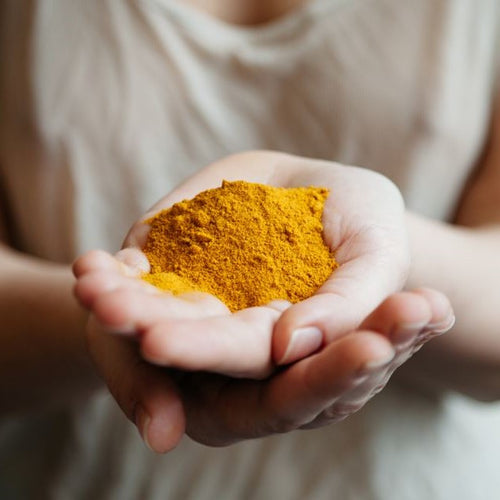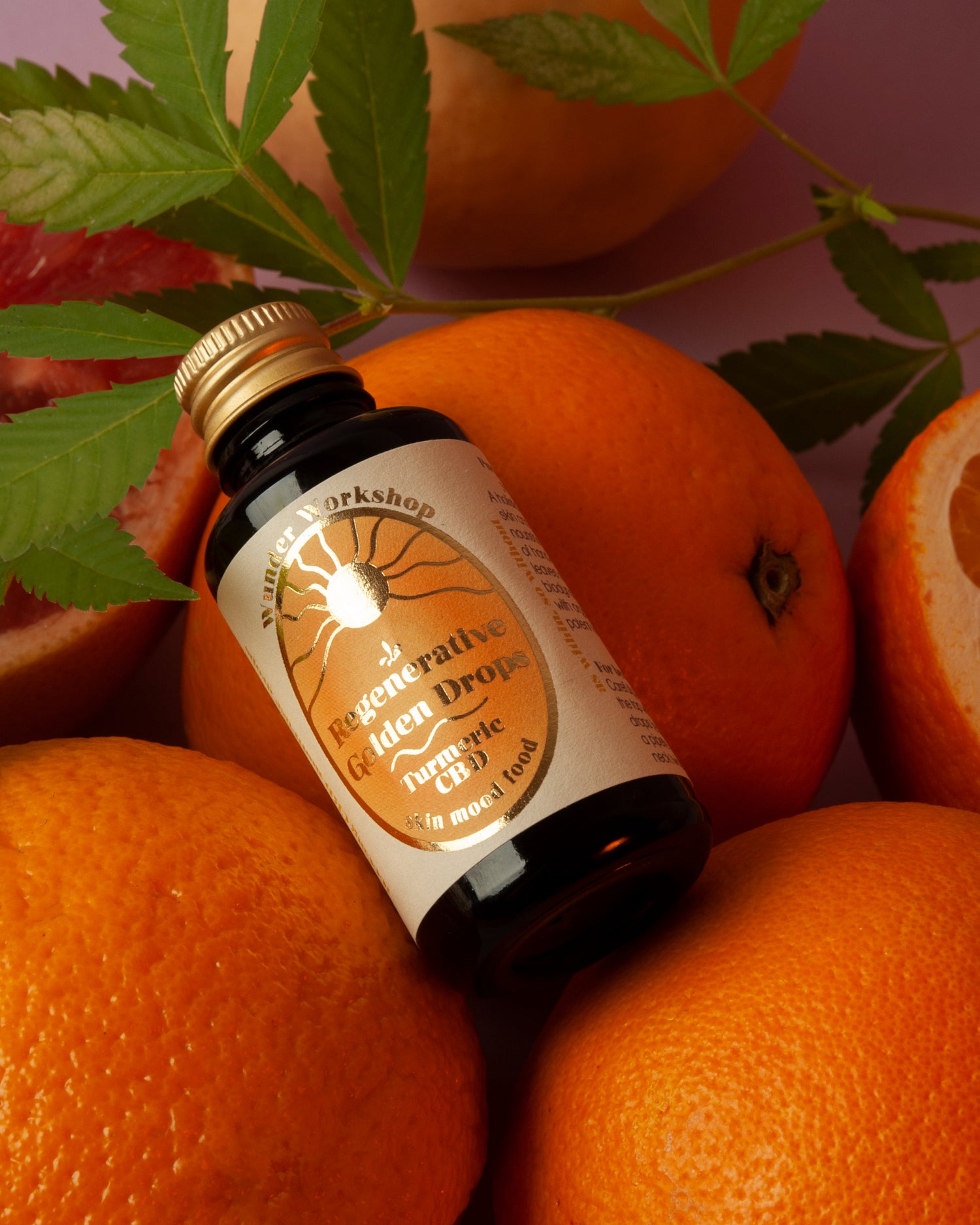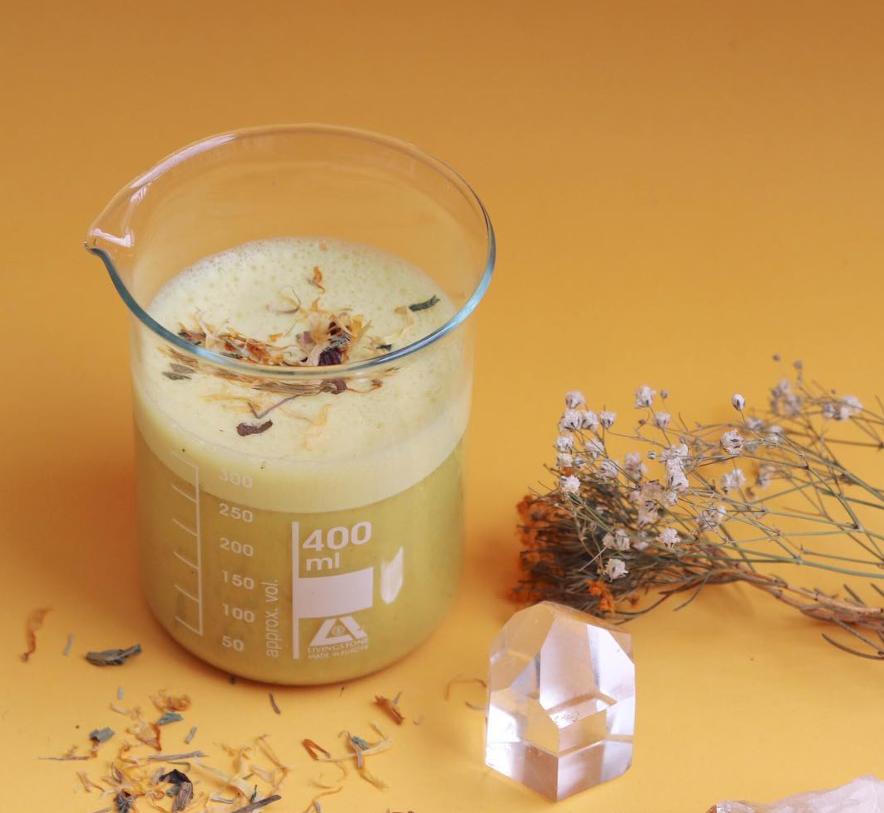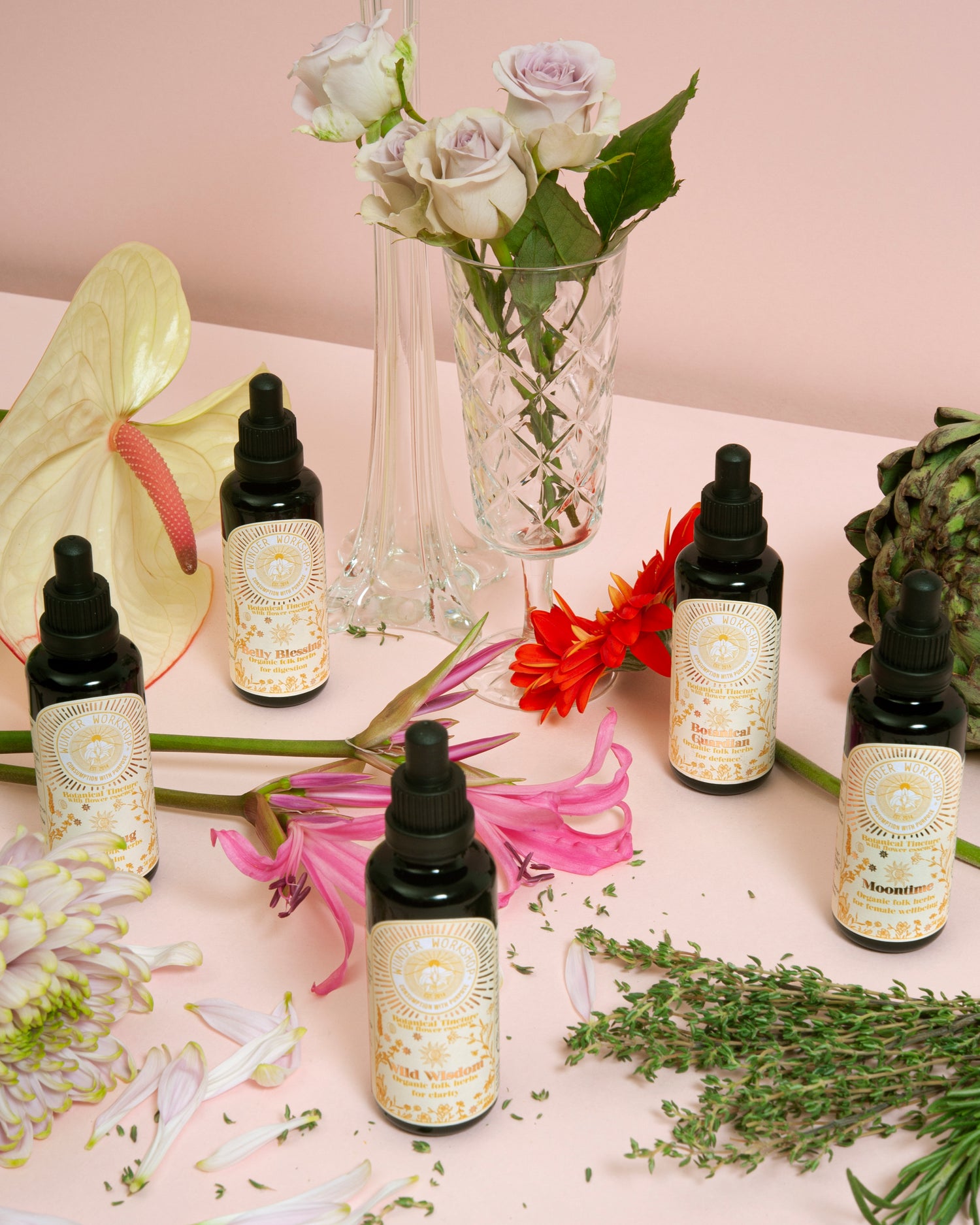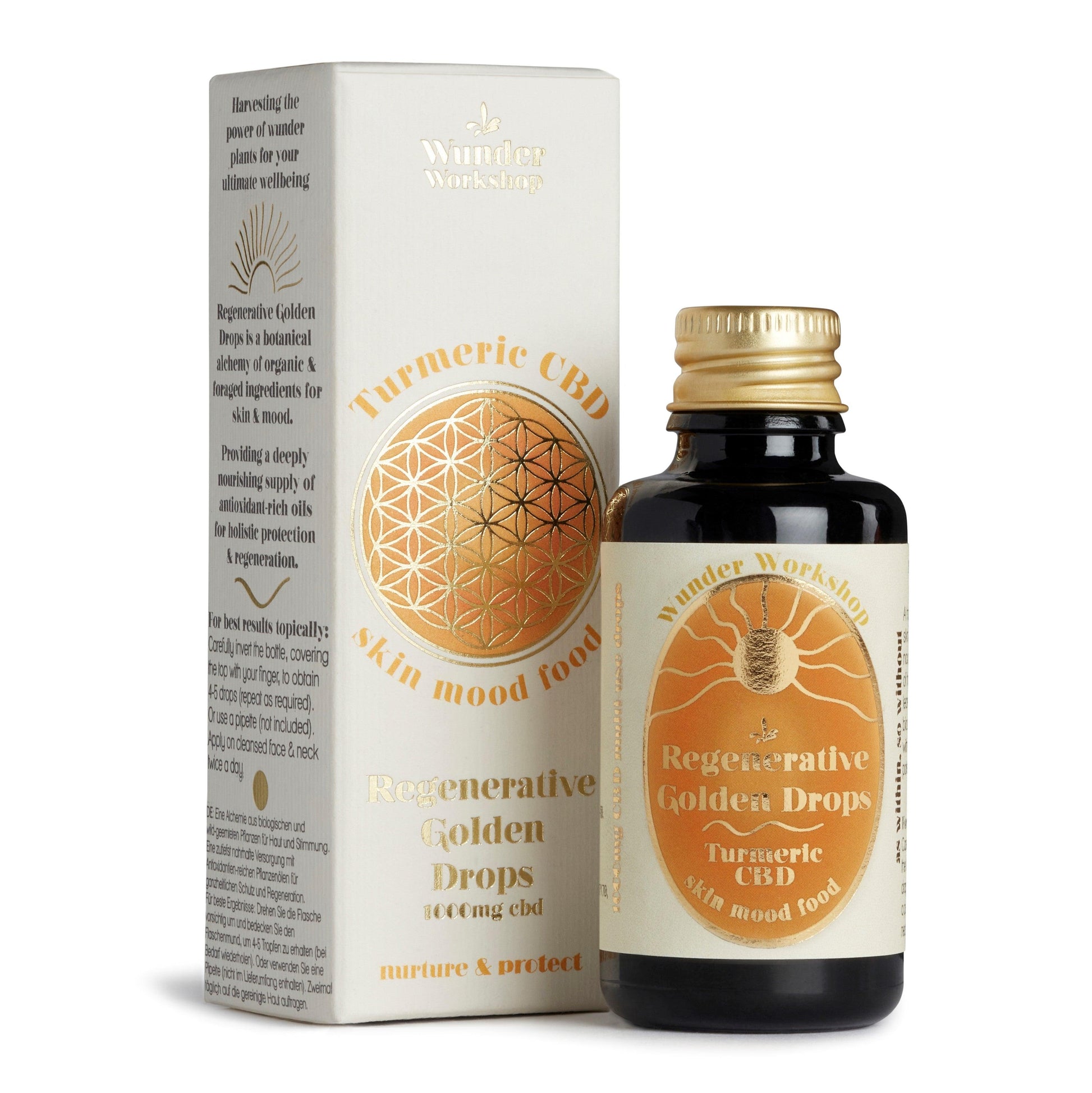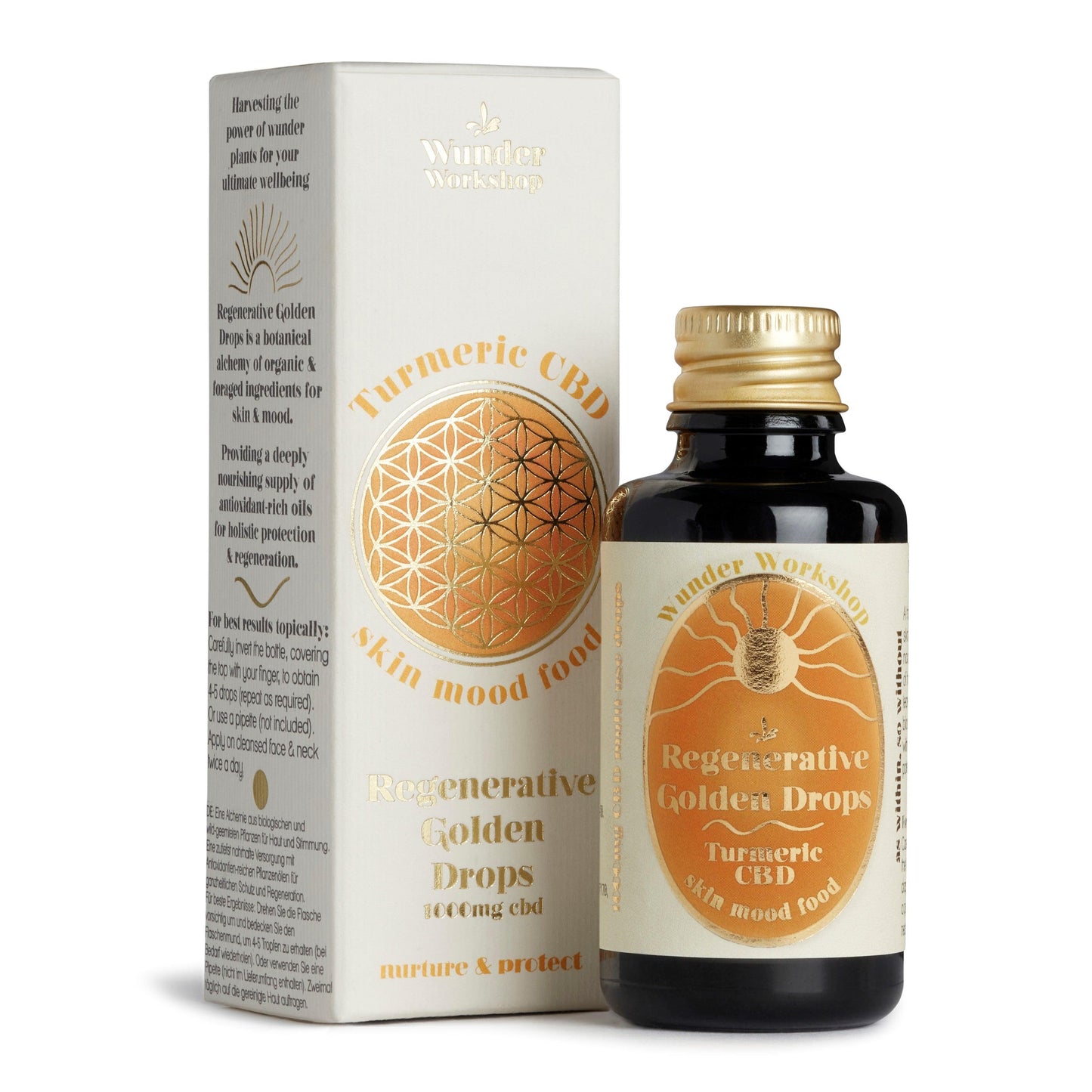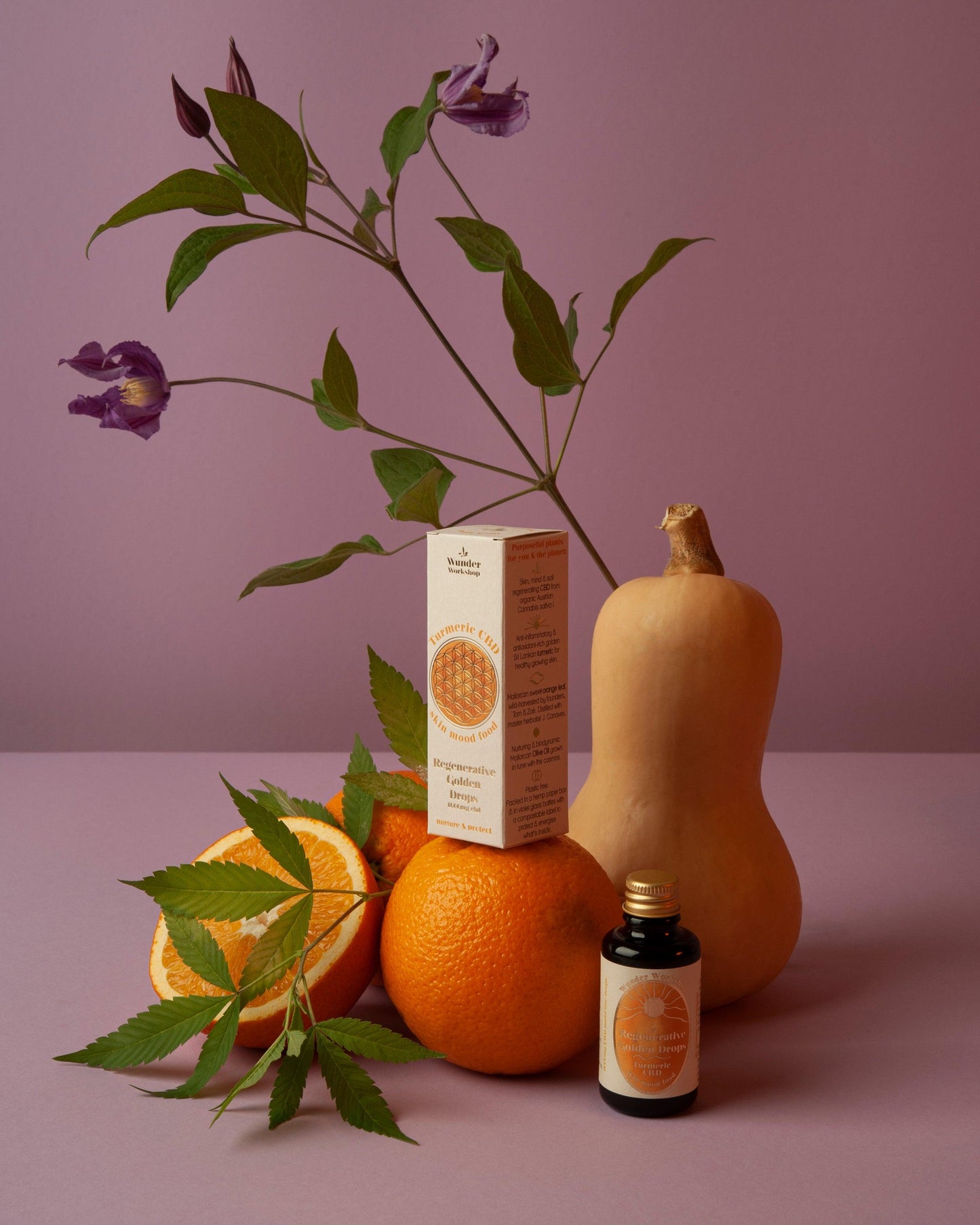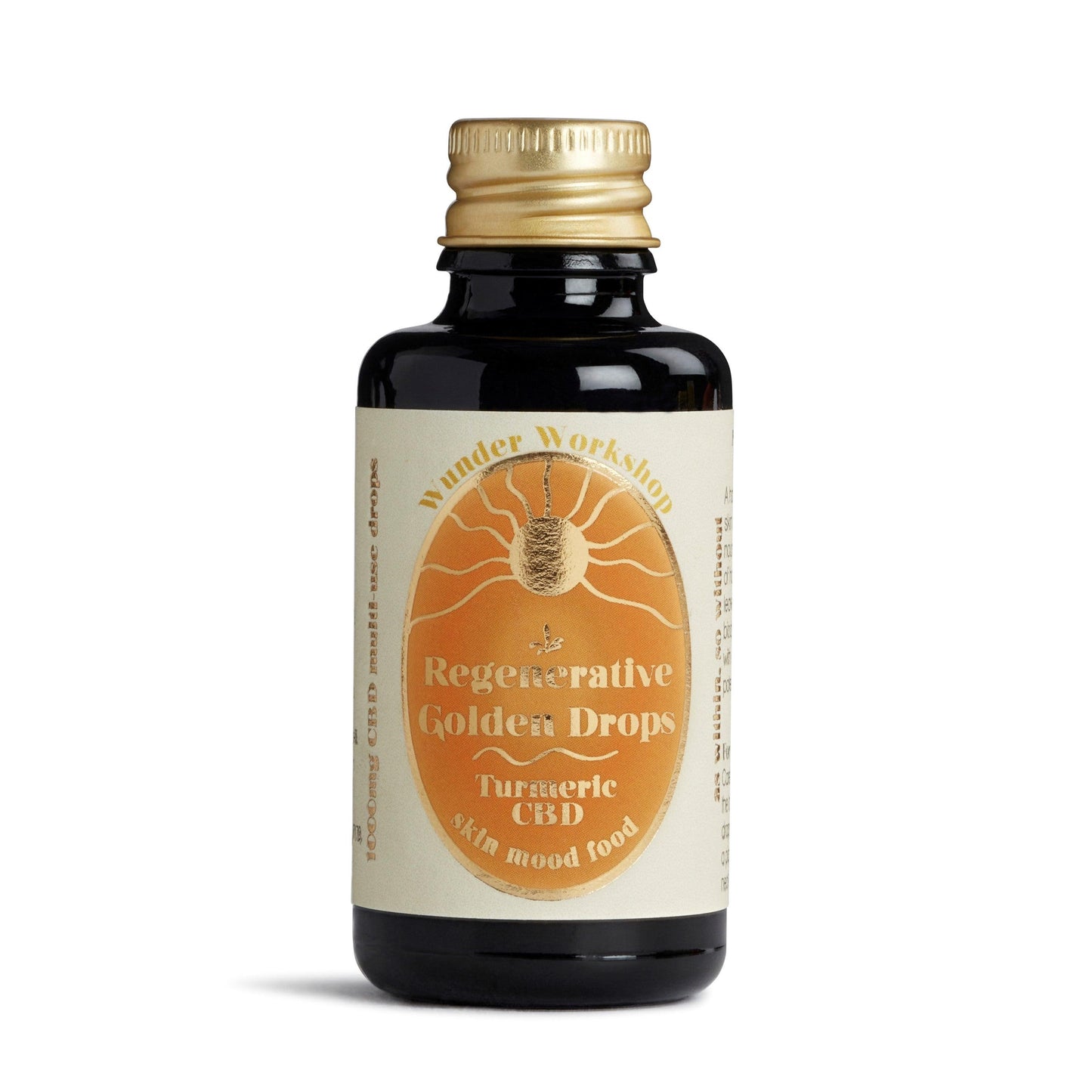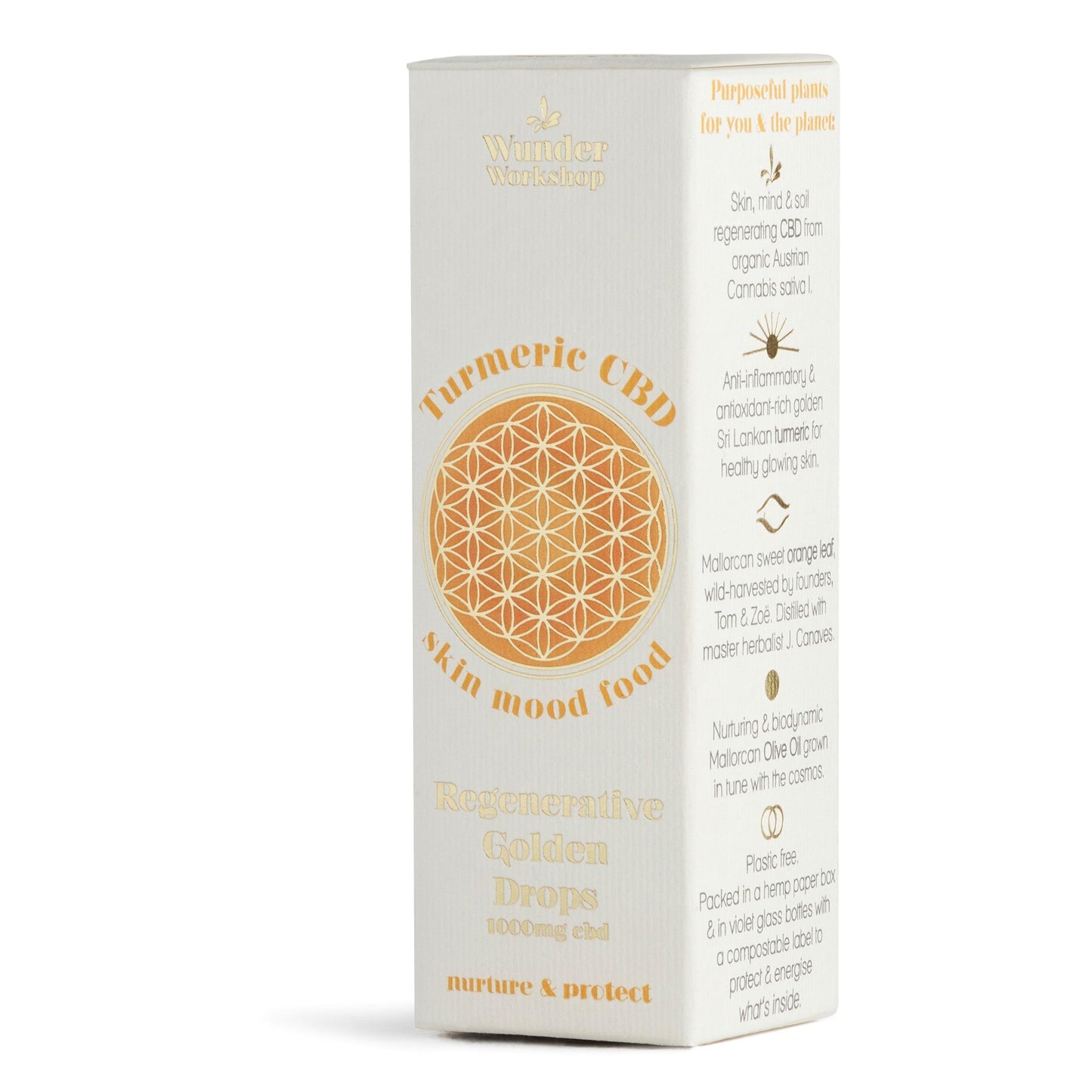Turmeric may taste great in curries and hot lattes but that’s not all this bright yellow spice is good for. More and more people are now using turmeric for skincare.
At Wunder Workshop, we have developed a potent anti-inflammatory skincare oil using the powers of Turmeric and CBD - you can jump to this here.
Back to it... You might be wondering ‘is turmeric good for skin?’ We can see why you might never have considered the benefits of turmeric when it comes to your skin health but we’re going to break down why turmeric powder might be the answer to a glowing complexion.
What is Turmeric?

Turmeric is a yellow spice that is obtained from the root of the turmeric plant (species name, Curcuma Longa). It has a bright yellow colour (thanks to the many curcuminoids found in the plant) and a bitter taste that makes it great for use in curries, mustards, butters, and cheese.
Alongside its culinary uses, turmeric has been used in medicine for centuries. Ancient medicinal practices used turmeric to treat a range of different health conditions. Because of the many health benefits of turmeric, it is still used across the world today as part of alternative medicine.
Is Turmeric Good for the Skin?
Besides being a beautiful yellow colour, there are many reasons to take turmeric.
It is a natural anti-inflammatory because it is packed full of a bioactive ingredient known as curcumin, which can lower the level of pro-inflammatory molecules in your skin. Curcumin is also a potent antioxidant that can reduce oxidative stress in your skin.
So, what does all of this mean? It means that there may be many benefits to using turmeric for skin health and skincare.
Turmeric can tackle a few different skin health problems, including fine lines, redness, irritation, and scarring. All of these symptoms are common in acne, psoriasis, and eczema.
It can provide a natural exfoliating effect to reduce pigmentation and even out the skin’s tone and texture.
The antioxidant effects of curcumin can slow down skin cells damage. This can reduce the risk of fine lines and wrinkles. The antioxidants can also enhance your skin’s natural glow and give your skin an overall healthier and fuller appearance.

How Can You Add Turmeric to Your Skincare Routine?
Adding turmeric into your skincare routine means you can get all of the above benefits without needing to search for specific products or switch up your existing routine. What’s even better is that it’s so easy to add turmeric into your usual regime and there are lots of different ways you can do so.
Here are some great ways to add turmeric into your skincare routine.
Believe it or not, it’s pretty easy to make a DIY face mask and it’s one of the easiest ways to use turmeric for skincare. There are lots of easy-to-follow recipes online to make a basic face mask and all you need to do is add a teaspoon of turmeric powder.
Here is an easy recipe and method to create your very own turmeric face mask.
Ingredients
- 1 tsp of turmeric powder
- 2 tbsp plain flour, chickpea flour, or finely ground oats
- 2 tbsp plain yoghurt or coconut oil
- 1 tsp honey
Method
- Combine all of the ingredients together until they are fully combined. They should form a paste-like mixture. Add warm water if necessary to get the right consistency.
- Apply the mixture gently to your face and allow it to dry.
- Leave the mask on for 10-15 minutes before washing off with warm water.
You can also create a turmeric face mask that specifically targets acne. Here is a recipe to follow if you want to zap those zits away with a turmeric-rich mask.
Ingredients
- 1 tsp apple cider vinegar
- ½ teaspoons turmeric
- 1 tbsp honey
- 1 tbsp milk
Method
- Soak a cotton wool ball with apple cider vinegar and gently rub it onto the face. Leave it for 5 minutes.
- Meanwhile, mix the turmeric, honey, and milk until fully combined. Apply it to the face and leave for 15-20 minutes.
- Rinse the mask off with warm water and watch the redness and irritation slowly decrease.
Some of us are much more prone to getting breakouts than others but we all get the odd spot here and there on our forehead, cheek, or chin.
Whether you’ve got one tiny spot on your face or a cluster of angry, red spots, turmeric might be a great solution. The anti-inflammatory and antioxidant properties of curcumin can reduce redness and irritation, helping to even out the skin and reduce the severity of your breakouts.
To create a DIY turmeric spot treatment, combine ½ a tsp of turmeric with some honey, coconut oil, or milk. Apply the mixture to your spots and leave for 10 minutes before washing off with warm water.
Got patches of dry skin? Turmeric might be able to add some moisture and hydration to relieve the dryness. All that you need is turmeric powder, honey, and coconut oil, all of which can easily be found at your local grocery store or in an online health store.
Mix the turmeric powder with honey or coconut oil until it forms a paste. Apply it to your dry patches and leave it for 10-15 minutes. Gently wash it off with warm water and watch the dryness disappear!
We know what you’re thinking... won’t my face turn bright yellow if I add turmeric to my foundation?
Don’t worry. You won't turn bright yellow as long as you don’t go overboard with the turmeric powder!
Adding turmeric powder to your usual foundation can help to match the natural golden or peach undertones of your skin.
Mix a small amount in with your foundation when you are going through your makeup routine. You might want to mix it in a small bowl so that you can get the perfect colour before you apply it to your face.
You can get the same effects with moisturisers too. Simply mix some turmeric powder into your usual moisturising cream for some extra anti-inflammatory and antioxidant effects.
Similar to the DIY turmeric face mask, you can quickly and easily make a DIY face scrub to gain the anti-inflammatory and antioxidant benefits of the yellow spice.
The exfoliating properties of face scrub can help to remove built-up dirt and oil on your skin, leaving your face looking and feeling refreshed.
Here is a great recipe that you can use to formulate the perfect turmeric face scrub.
Ingredients
- 1 tsp turmeric
- 3 tsp baking soda
- 2 tsp milk or plain yoghurt
Method
- Combine all of the ingredients together until they are fully combined. Add warm water, extra milk, or extra yoghurt if the mixture seems too dry.
- Apply the mixture gently to your face, massaging it into the skin in circular motions.
- Rinse the face scrub off with warm water and follow up by applying moisturiser to your skin.
If you regularly apply Vaseline or lip balm to your lips, try mixing some turmeric powder into your lip product. It may help to reduce any redness around your mouth and protects the lips from damage caused by environmental stress, such as cold weather.
Adding egg yolk to your face mask can add extra protein and micronutrients (such as B vitamins) to the skin, both of which are essential for great skin health. The protein in the egg yolk can boost skin growth and repair, and the added turmeric lowers inflammation in the skin.
Follow this easy recipe to make a home-made turmeric egg yolk hydrating face mask.
Ingredients
- 1 egg yolk
- 1 tsp turmeric
- 1 tsp olive oil
Method
- Combine all of the ingredients into a thick paste and apply it to your face.
- Leave the paste to dry for 15-20 minutes before washing it off with warm water. Your skin will be left feeling moisturised, hydrated, and healthy.
Adding Supplements to the Mix
Using turmeric for skincare, and adding turmeric powder into your makeup products and face masks, is just one way to experience the benefits of curcumin. You can also take turmeric supplements in the form of capsules or tablets. Of course, we think one of the most enjoyable ways to take turmeric is as a delicious tea.
Supplements are a great way to enhance the dosage of turmeric that you’re getting so that every part of your body can get a boost of curcumin. Add it to your skincare routine, sip it in your early morning routine, and even add capsules too. It’s a powerful plant extract and worthy of a place in your wellness ritual. And now you know it can have a place in your beauty regime too!
Guest post by Daisy Kim.

